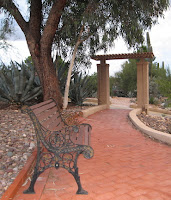The word "halcyon" is obscure. It comes from the ancient Greek and refers to a species of kingfisher bird that was associated with calm weather during the winter solstice. Look it up. Calm sea is a nice association if you are an ancient Greek whose livelihood depended upon sailing the Aegean in open rowboats with a flat sail.
 |
| Winter solstice by Aravaipa Creek. |
If anything defines the winter holiday season, it's the memory and celebration of the good days of yore. Arguably, that's what Christmas has become. It's a lot less a celebration of the birth of any particular spiritual Master or religion, than it is a celebration of customs that we associate with the arrival of winter. Some of the "Christmas" traditions (Santa Claus, reindeer, and Christmas tree decorations) have roots in shamanic culture. (The part about Amanita mascara mushrooms as an origin of Christmas tree baubles is intriguing.)
The last weeks of the year are a great time to slow down, reflect, and celebrate; to at least get out of the groove of ordinary life. Actually, each season offers its opportunity to celebrate, but winter may be the grandest opportunity because we need the celebration most when it's getting old and dark outside. In this seasonal context, Christmas is only one night and a day, only one set of celebrations and expressions within a larger and longer context.
Hence I have no problem with "Season's Greetings", "Happy Holidays", "Happy Hanukkah", "God Jul", "Happy Diwali", or "Let's Get Loose for Saturnalia". Some are closer to my traditions than others. Sadly, literal Muslims make it a religious duty to eschew any celebration of a solstice, a bit like literal Christians who complain about Starbuck's plain red holiday cups. But even in the world of Islam, such traditions survive; e.g., Yalda festival. "Happy Halcyon Days" ought not offend Muslims or Christians, but it may be too obscure. I'm open to suggestions.
Happy Winter Solstice Celebrations! May the New Year bring us all happiness, health, friendships, and a modicum of prosperity!













































